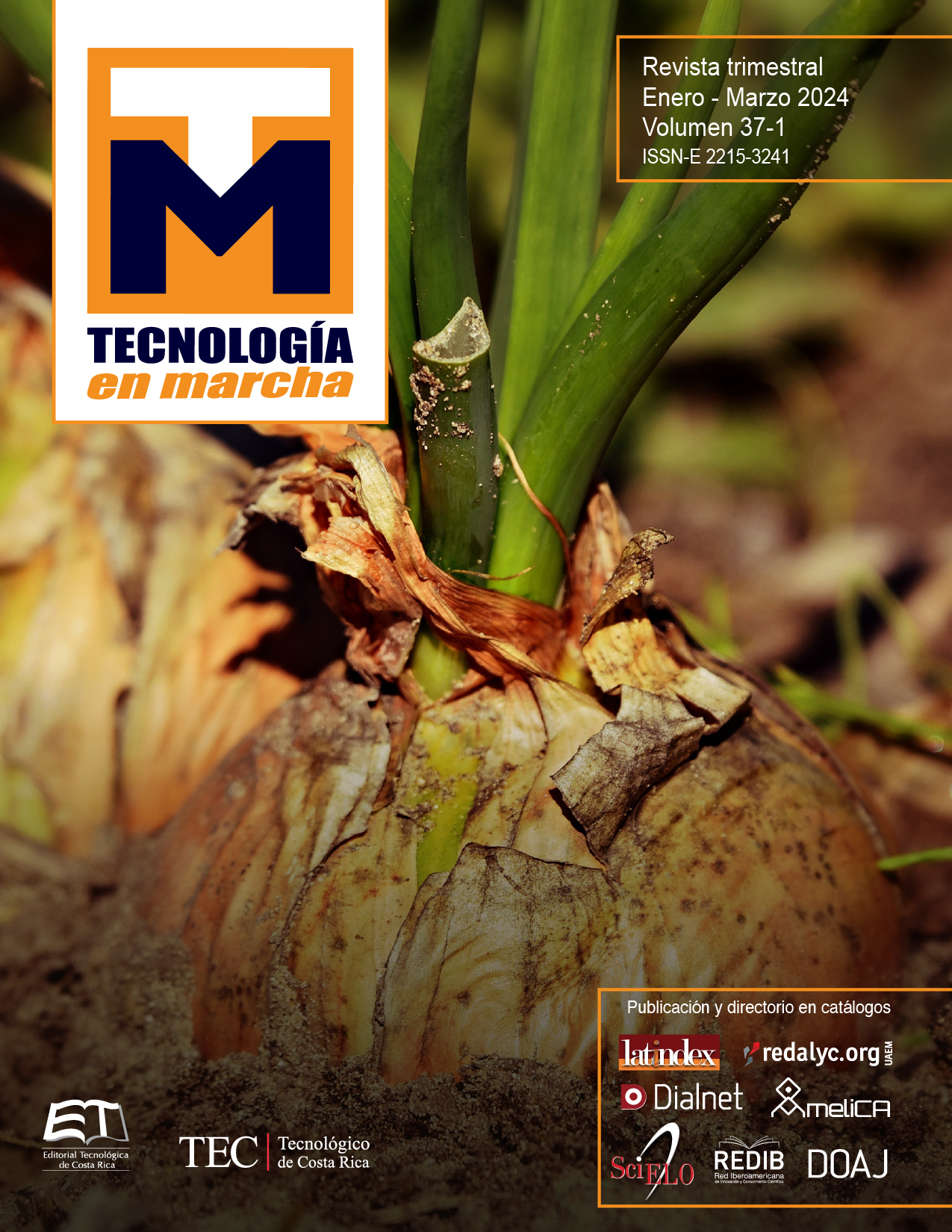Comparative analysis of the profitability of the cultivation of sweet pepper variety Natalie from two protected horticulture greenhouses in the Huetar Norte Region
Main Article Content
Abstract
The objective of this work was to compare the process of its production costs and its profit and loss statement of two sweet pepper producers of the Horticulture Network extension project of the North Huetar Region. The profitability and breakeven point of two greenhouses that were part of an extension project Protected Horticulture Network Huetar Norte Region were evaluated, the results showed that the Cinchona greenhouse has a lower average price than the San Francisco greenhouse, almost 72% less, the total production costs of the San Francisco greenhouse are double that of the Cinchona greenhouse. Although San Francisco has a better price, but because it has higher production costs, it is much less profitable than Cinchona (21% vs. 42%). In the graphs it was already possible to see that San Francisco had a greater weight in the costs on the raw material side, that is why in the advice they were given, they were told about the importance of looking for other supplies with lower prices and to Cinchona he was advised to raise his prices. The San Francisco greenhouse was recommended to try to lower production costs by seeking other inputs or other input suppliers. Cinchona was advised to look for other clients and try to find better prices in order to obtain better profitability.
Article Details

This work is licensed under a Creative Commons Attribution-NonCommercial-NoDerivatives 4.0 International License.
Los autores conservan los derechos de autor y ceden a la revista el derecho de la primera publicación y pueda editarlo, reproducirlo, distribuirlo, exhibirlo y comunicarlo en el país y en el extranjero mediante medios impresos y electrónicos. Asimismo, asumen el compromiso sobre cualquier litigio o reclamación relacionada con derechos de propiedad intelectual, exonerando de responsabilidad a la Editorial Tecnológica de Costa Rica. Además, se establece que los autores pueden realizar otros acuerdos contractuales independientes y adicionales para la distribución no exclusiva de la versión del artículo publicado en esta revista (p. ej., incluirlo en un repositorio institucional o publicarlo en un libro) siempre que indiquen claramente que el trabajo se publicó por primera vez en esta revista.
References
Rojas Méndez, José Javier y Paniagua Madrigal, Fernan (2015). Comportamiento agronómico de Capsicum annuum L., Lycopersicon esculentum M. y Cucumis melo L. Bajo cultivo Protegido Hidropónico utilizando la solución universal de Steiner (Tesis de Licenciatura). Instituto Tecnológico de Costa Rica. Recuperada de https://repositoriotec.tec.ac.cr/handle/2238/6413
Urizar Ramon, Nataneal (2011). Producción de tomate bajo condiciones de invernadero en la comunidad de Chitapol, Uspantan, Quche (Tesis de diplomado). Universidad San Carlos de Guatemala. Recuperada de http://biblioteca.usac.edu.gt/tesis/03/03_3787.pdf
Lamas Nolasco, M. A. (2010). Oportunidad de negocio en Agricultura Protegida. Mexico: Dirección General Adjunta de Inteligencia Sectorial.
Ministerio de Agricultura y Ganaderia. (2007). Agrocadena Regional Cultivo Chile Dulce. San Jose: Programa Agricultrua Conservacionista Unidad de Gestión INTA.
Alas Martínez, Mauricio (2003). Estructura de costos, para la producción de hortalizas en invernaderos de la Cuenca del Rio Reventazón, Turrialba, Costa Rica (Tesis de Maestría). Centro Agronómico Tropical de Investigación y Enseñanza.
Escobar, H. (2003). Análisis de costos para hortalizas ecológicas. Bogotá: Fundación Universdad de Bogotá Jorge Tadeo Lozano.
Moreno Reséndiz, A., Aguilar Duron, J., & Luévano Gonzales, A. (2011). Características de la Agricultura Protegida y su entorno en México. Revista Mexicana de Agronegocios, 763-774.
Salazar Moreno, R., Rojano Aguilar, A., Figureroa Hernandez, E., & Francisco, P. S. (2017). Rentabilidad en la producción de hortalizas en amientes controlados. Universidad Autónoma de Chapingo, 1-11.
Martínez Mora, Esteban (2003). Estudio de costos de producción para el cultivo de chile dulce (Capsicum Annuum) bajo invernadero en la localidad de Pejibaye (Tesis de Bachillerato). Instituto Tecnológico de Costa Rica. Recuperada de https://repositoriotec.tec.ac.cr/bitstream/handle/2238/198/mora_martinez_esteban.pdf?sequence=1&isAllowed=y
Gitman Lawrence (2007).Administration Financiera. Pearson Education. Mexico.
Horngren, Charles.T; Datar, Srikant,M; Foster, George. Contabilidad de costos. Pearson. México.

